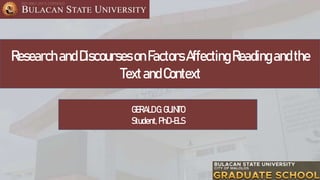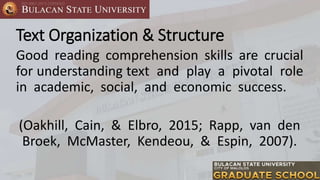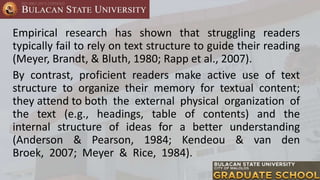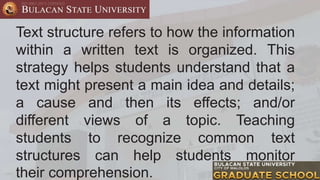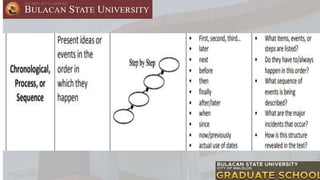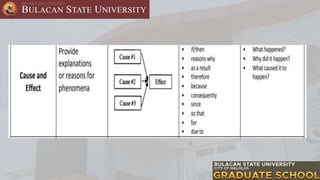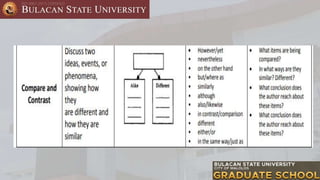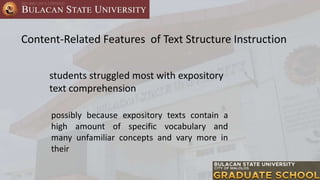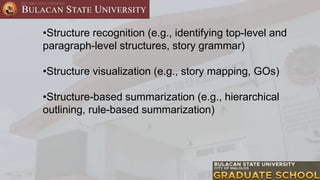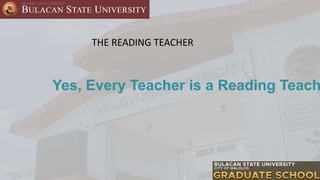This document discusses several factors that affect reading comprehension, including text organization and structure, readability, and the role of teachers. It notes that proficient readers actively use text structure to organize information, while struggling readers do not. Text structure refers to how information is organized, such as main ideas and details. Teaching students to recognize common text structures like compare/contrast can improve comprehension. Readability considers word difficulty and sentence length. The document argues that every teacher is responsible for teaching reading skills relevant to their content area by modeling reading strategies and ensuring students understand the purpose and style of different texts.
